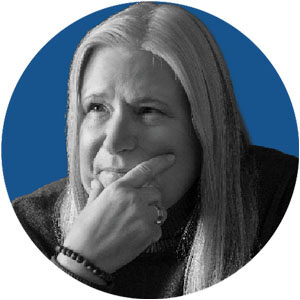For institutions of higher education that seek to integrate virtues into their curricula, there are numerous practical challenges. Reflecting on my own experiences directing the Institute for the Study of Human Flourishing at the University of Oklahoma (OU) from 2015–2022, I am convinced that anyone endeavoring to integrate virtue must not only understand philosophy, pedagogy, and faculty needs, but also reckon with practical realities such as institution size, mission, and administrative realities.
At OU, we were fortunate to receive two rounds of funding from the John Templeton Foundation to incentivize faculty to integrate virtues into their courses. During the first, we made calls to interested faculty and, with the assistance of the Office of Academic Assessment, worked with faculty one-on-one to select virtues from the list of nine then promoted by the Institute (open-mindedness, intellectual humility, love of learning, honesty, perseverance, self-regulation, compassion, fairness, and civility).
We learned two main things from this experience. First, most faculty who are not in disciplines such as philosophy or religious studies do not know what a virtue is. Though they are familiar with the names of virtues, they are not aware of the complex structure of virtue. We worked with virtue as conceptualized in the Aristotelian tradition, where it is regarded as an entrenched multi-track disposition of character. By “entrenched,” we mean that virtue is deeply embedded in a person’s character. Part of our aim, of course, was to begin or solidify this process in college students. By “multi-track,” we mean that virtue requires perceptual, cognitive, motivational, and affective capacities, as well as the capacity to act. The capacities to perceive when a virtuous response is called for, think through what an appropriate response would be, want to be virtuous for the right reasons, and feel the appropriate emotional response and act accordingly are all components of a virtuous disposition. Secondly, we learned that assessing the progress of students in virtue is quite challenging, especially when one is dealing with a semester-long course.
We sought to address these issues in our second attempt at virtue integration. Entitled, “Teaching Intellectual Virtues,” this project focused on a suite of intellectual virtues, which addressed concerns that some faculty had about trying to integrate moral virtues into classroom study. We provided considerably more instruction and resources for participating faculty. We held a half-day mini-conference featuring speakers from OU and other universities, as well as four follow-up workshops, all on Zoom. We held a special workshop for participants and sought to create a “community of practice” of supportive faculty. In these efforts, the Institute partnered not only with the Office of Assessment, but also with the Center for Faculty Excellence.
Assessment remained a challenge, but we were able to focus on how both teachers and students perceived the value of the virtues for their ability to learn from the course, how incorporating those virtues changed students’ perceptions of the value of the material, and so on. Some of these efforts relied on self-report measures. Did students feel that they were more open-minded at the end of the semester than at the beginning? Did encountering religious texts from different traditions improve their empathy? Did empathy help them to understand and appreciate those texts? Many teachers indicated a willingness to continue to integrate virtues into their courses, even without being incentivized.
During my seven years at OU, other attempts at virtue integration included the OU Character Initiative, which was backed by the President and nominally headed by the Vice President for Student Affairs and Dean of Students. This initiative consisted chiefly of integrating virtues into the experiences of first-year students through orientation activities and first-year classes. University College also pioneered an initiative in which many first-year students were enrolled. Faculty in their “Foundations for Learning” courses deliberately integrated the Institute’s nine virtues, created materials and events, and worked diligently to assess the virtues. Based on all these experiences, I would like to offer some reflections.
First, the size of the institution matters. In the fall of 2020, OU had 21,383 students, and the total campus size is 3,326 acres.1 The large size of OU, both in numbers of students and in the sheer size of the campus, made large-scale efforts to promote virtue challenging. Smaller institutions could well be more amenable to creating the kinds of closely-knit communities in which virtue can best take root and thrive. That said, the Institute was able to create a core cadre of faculty from many disciplines who were interested in virtue.
Second, whether the institution is public or private, along with the institution’s mission, makes a difference. Any college or university would be justified in promoting intellectual virtues, because these virtues are essential for the success of academic endeavors. Private institutions, especially religious institutions, could have an advantage if their mission is explicitly to promote the values and virtues of a distinctive tradition. This provides a rationale and justification for seeking to integrate virtues into courses, orientation experiences, extracurricular activities, residence hall life, and so on. Making an argument for the creation of a “total community” that is infused with virtues is made easier, since the virtues can then be regarded as intrinsic goods that are integral to the DNA of the institution. Otherwise, one must fall back on arguments that virtues are add-ons or instrumental goods that enhance academic success and retention rates, and that employers seek when hiring.
This leads to my final point. The success of these endeavors depends crucially on having a supportive higher administration that understands and appreciates the value of virtue and character. Today, many administrators are concerned with numbers—retention rates, employment placement, and so on. With the appropriate data, these people can be convinced of the instrumental value of virtue for retention, graduation, and placement, but securing funding is an uphill battle. Another challenge is the high turnover rate among administrators. Some administrators spend only a few years at an institution, then move to a higher position elsewhere. They often have their own agendas and lack a deep understanding of the institution as well as institutional memory. Unless virtue integration aligns with their immediate plans, they are likely to be uninterested.
In summary, the institutional context in which virtue integration is to take place will shape these efforts and can make it easier or harder to be successful. Virtue integration is subject to the larger forces at work in academia. Concerns with numbers—retention rates, placement data, assessment data—can make people lose sight of the true value of virtue, its role in the formation of student character. Administrative turnover and the lack of stability it brings are also factors to be reckoned with. I am not suggesting that these challenges are insurmountable, but that knowledge is power. To navigate them successfully, they must be kept in mind.
Note
- See “University of Oklahoma” at usnews.com/best-colleges/rankings/national-universities.
















